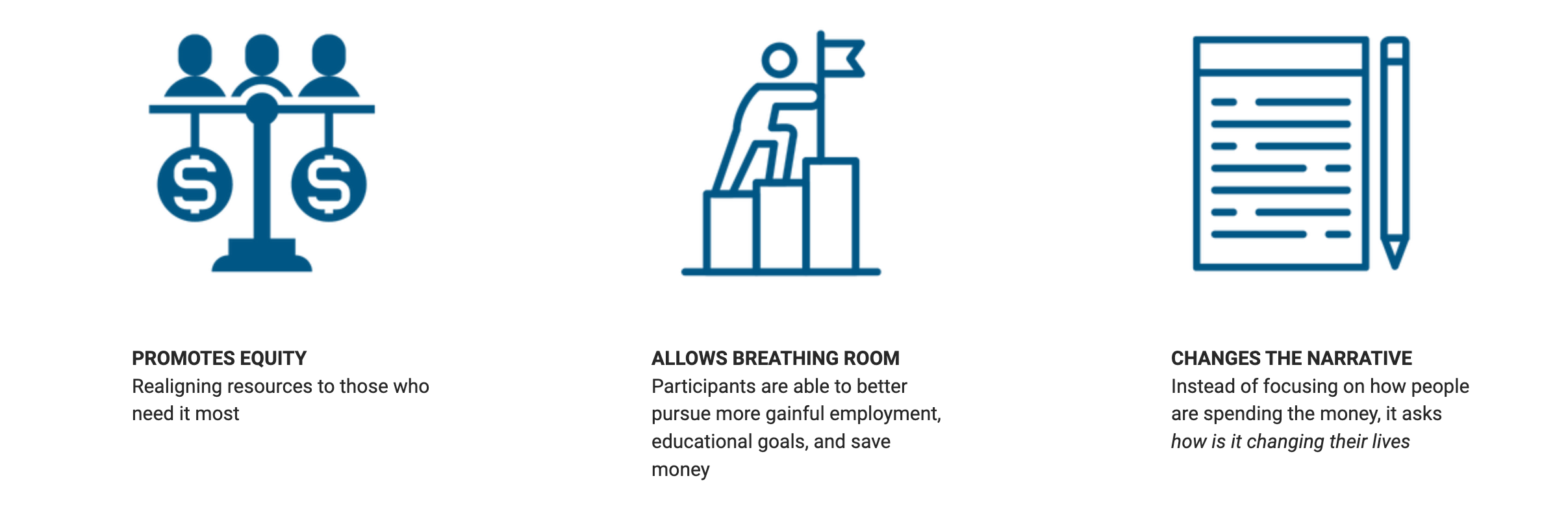The Arlington Community Foundation in partnership with the Arlington County Department of Human Services just released the results of Arlington’s Guarantee. This guaranteed income pilot project supplemented the income of 200 Arlington households with children with $500 a month in unconditional cash for 18 months with carve outs for 25 undocumented households and 25 people returning from incarceration.
The pilot was funded with $2 million raised by the Arlington Community Foundation from private donors. It began in 2021 and ended in November 2023. Anita Friedman, Director of the Department of Human Services said this is an example of a public-private partnership at its best.
Arlington’s Guarantee was designed in the short term to provide extra assets for very low income households struggling to make ends meet and in the long term to contribute to a national program of other pilots seeking to address wealth inequality and to inform public policy seeking to build a federal income floor. The purpose was to provide extra income, increase the households sense of control over their decisions and increase their connection of belonging to the community.
Just over 24,000 people or over 10,000 households in Arlington make under 30 percent of the area median income (AMI) or about $45,000 for a family of four. This pilot developed out of the commitment of Arlington Community Foundation and Department of Human Services to focus on the existing disparities in the wealthy county of Arlington where child care providers, school aides, construction workers and school bus drivers make less than 30 percent of the AMI and can’t afford to live in the county where they work. Current data shows the living expenses for this group average three times what they make.
The design of this pilot was to provide unrestricted funds in the belief that these households knew best what they needed. The demographics of the group included African-American 53 percent, White 23 percent, Asian 6 percent with 18 percent other. The preference language was English at 49 percent but included 22 percent Spanish, 11 percent Amharic and 7 percent Arabic. Most identified as people of color. 
A control group was established with no supplemental funds provided. Most in the pilot had some housing stability so they could use the funds for other things. When asked what they had been able to do in the last six months, 38 percent indicated groceries, 29 percent bills and debts, 28 percent household essentials, 9 percent family activities, 22 percent for such things as medical and car repairs.
The pilot was designed with guard rails to assure that the extra income received by the households didn’t count against their benefits eligibility and result in loss of any of their other benefits as a result of this temporary increase in income.
The impact of the pilot showed up in increased employment and income. Employment increased from 75 percent at baseline to 87 percent at final; monthly income from work increased from $1,200 to $1,640 monthly and median wage from $15 per hour to $16.50 an hour. But even with these increases, the participants were still making less than a living wage.
The pilot study took place during a time of great uncertainly with Covid adding to financial pressures, housing and child care expenses up and the eviction pandemic causing more pressure with the ending of the housing moratorium. So even with the extra income, there was continued instability and pressure facing the low-income families.
However, measures of physical well being indicated 84 percent felt they had more control over their future with reduced stress and anxiety. They indicated they had more hope. When asked how they were doing compared to 18 months ago, 73 percent said much better and 26 percent somewhat better. In contrast, in the control group 11 percent indicated they were much worse, 14 percent somewhat worse and only 33 percent somewhat better.
Eighty-one percent in the pilot indicated they felt more included in the community while 91 percent took advantage of new opportunities that were possible with increased resources and increased their time with family.
Friedman says, “Some groups such as the undocumented and formerly incarcerated were less positive than overall. They had the highest levels of borrowing, the lowest levels of employment due to the barriers for employment for those returning from incarceration.”
One of the program participants appearing before a recent presentation on the pilot said, “Now I just focus on what I need to do without stressing. Within 18 months I got 100 percent on point. I did the things that I needed. Am I loved?” His answer was yes. One participant said the money saved her after a break-in caused her to break her lease in order to move to a safer place and pay the financial penalty that she couldn’t afford. “The money came at just the right time.”
The next steps moving forward are to move beyond a temporary fix that cannot be sustained to a permanent legislative solution at the state and Federal level. In addition to Arlington’s Guarantee, Richmond, Alexandria and Fairfax County are conducting similar pilots in Virginia with 144 pilots in 41 states. One hundred and thirty communities and 145 mayors and elected county officials are advocating for federal and state governments to codify unconditional cash with no strings attached to create an income floor for families in poverty.
For more information read the report at arlcf.org or https://www.arlcf.org/arlingtons-guarantee/
